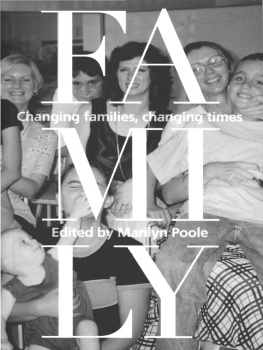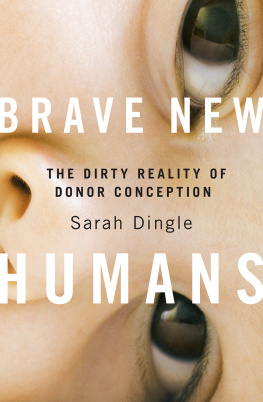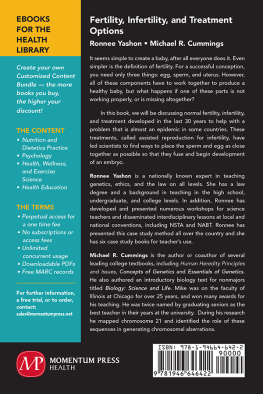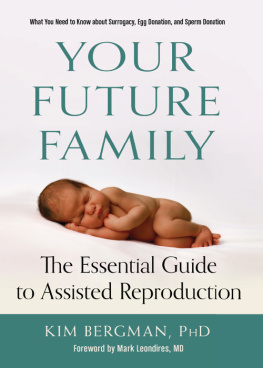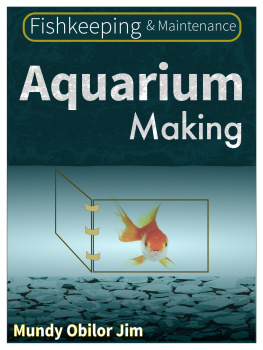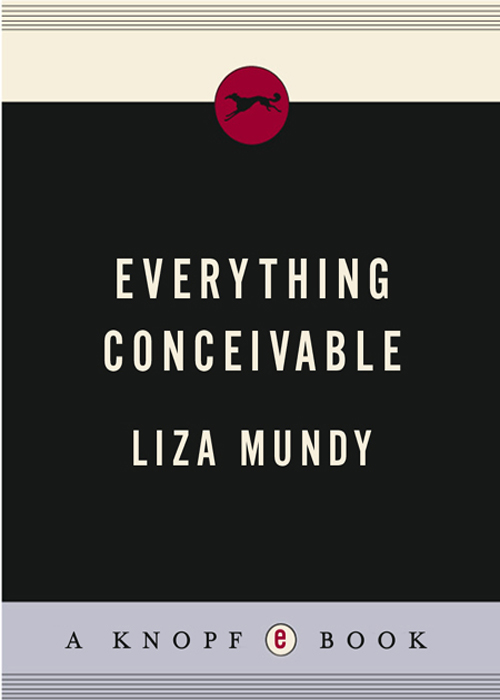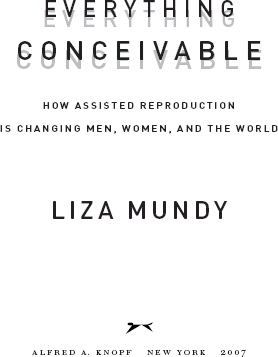Of the hundreds of individuals interviewed for this book, a small number wished to preserve their anonymity because of the private nature of their reproductive decision-making. In most cases, this was achieved by omitting a name. In a few instances where peoples narratives are presented at length, names have been changed. The names of the Ramirez family members are pseudonyms. In this case, the parents were happy to discuss childbearing issues openly, but because of the nature of the mothers police work, she preferred that her name and those of her children not be used. Melanie, in chapter two, and Jane and Emma, in chapter eleven, are pseudonyms, for reasons explained in the text. Every other name, and all events described in the book, are real.
PROLOGUE
AN UNEXPECTED DEVELOPMENT
One day in early May of 2005, the Reverend Beth Parabthe personable, sandy-haired young associate rector of the Episcopal Church of St. Matthew in San Mateo, Californiasat down at her desk and opened her e-mail. As usual, the mornings mail brought messages from parishioners with various questions and suggestions regarding church business, and Reverend Beth proceeded to reply to them, scrolling down the list until she came to a message that was not usual at all.
That message came from Laura Ramirez, a local police officer whose children Reverend Beth was scheduled to baptize on May 22, after the regular Sunday morning service. The children were triplet boys. Their names were Preston, Edward, and Hunter Ramirez, and they would be exactly six months old on their baptism day. The twenty-second happened to be Trinity Sundaythe Sunday after Pentecostand in thinking about the prayer she would write for the baptism, Reverend Beth had already started toying with the happy juxtaposition of trinity and triplets. This baptism would include six godparentsone pair for each childand of course the parents, Laura and her husband, Hector Ramirez, as well as family members and friends. Which was fine; there was plenty of room in the nave of St. Matthews, a Gothic church built in the 1860s and expanded over the years to comprise several graceful stone outbuildings, a leafy courtyard, and a splendid Nativity window overlooking the baptismal font.
Now Laura Ramirez was writing to ask whether Reverend Beth could find a way to incorporate another participant in the baptism ceremony. That would be the Ramirez boys egg donor, a young woman who had in a sense engendered the occasion.
The egg donor, whose name was Kendra Vanderipe, lived in a suburb of Denver, Colorado. Not so long ago she had been a stranger to the Ramirez family. Laura Ramirez had located her over the Internet, with the help of a commercial, Web-based agency that procures egg donors for infertile couples. The Ramirez boys had been conceived by in vitro fertilization, the scientific procedure in which sperm and egg are brought together in a petri dish, and the resulting human embryos are grown for several days in the lab, and then transferred into the womb of the mother. In this case, the procedure had been carried out using the eggs of Kendra, the donor. The embryos had been gestated, and delivered, by Laura, their mother. After the birth of the boys a warm relationship had developed, unexpectedly, between the two women. At Lauras invitation Kendra had agreed to attend the baptism. It would be the first time she had seen the children conceived with her help. Laura wondered if Reverend Beth could find a way, in the service, to thank Kendra for all she had given her.
Reverend Beth had never written an egg donor into a baptismal ceremony. She didnt know any clergy member who had. But she was glad to try. She did not know Laura and Hector well, but everything about the Ramirezes suggested that they were a committed and deeply likable couple. One of the first contacts Reverend Beth had had with them was when Laura (an energetic multitasker who does a lot of e-mailing from her squad car) had e-mailed, several months back, to ask whether the church knew of any families who might welcome some secondhand newborn clothing, of which the Ramirezes, with three growing infants, had even more than most first-time parents. Reverend Beth also knew that Laura and Hector had tried hard to have children naturally. Only after a devastating series of miscarriages had the couple turned to fertility medicine, and a willing stranger, for help in doing what they could not do by themselves.
Recently married, Reverend Beth, who was in her early thirties, was looking forward to starting a family of her own. She felt acute empathy for anybody who wanted children and could not have them easily. Just three years out of seminary, she had already counseled a surprising number: not just women but men, and not just people who were actively trying but older couples who had confided to her their permanent sense of loss at never having had the child they longed for. Reverend Beth knew that suffering is part of human existence. She got the situation, theologically. Even so, infertility had always seemed to her an especially hard form of suffering to inflict. The fact that there are people in the world who can have children easily and do not want them, and people who want children ardently but cannot have them, seemed to her a kind of terrible cosmic joke, one of these things Im just going to have words with God about when I get there. Unlike some Christian leaders, she had no knee-jerk antipathy toward technologies that can help people have the families that will give their lives pleasure and meaning. It did not seem to her unnatural, or wrong, to make a family with the help of a third party. It did not seem to her unnatural, or wrong, to be the third party who helped.
But what about the baptism itself? How, logistically, to incorporate an egg donor into a ceremony that dates back more than two millennia, to the days when St. John the Baptist baptized Christ himself in the waters of the river Jordan? Its true that baptism symbolizes the creation of a new and deliberately constructed family, a family based on religious faith rather than on blood or genetic connection. True, too, that something similar was going on here. Love and parental commitment were understood in the Ramirez family as more important than any direct genetic bond. And yet genetics clearly mattered. So what exactly did an egg donor stand for? Where should an egg donor stand? The egg donor was not the triplets mother. She wasnt a birth mother, as in a conventional adoption. She was a new entity and at the same time a very old one: a progenitor in the purest, most stripped-down sense of the word. It was Kendra Vanderipes genetic history that was preserved in the chromosomes of Preston, Edward, and Hunter Ramirez, her unique history that came together with the unique genetic line of Hector Ramirez, a man unknown to her at the time of the boys conception, and barely known to her now. Two strangers, two gene lines that had evolved over two human migratory paths; now intertwined in the famous double helix to form a unique gene linethree unique gene linesthat would continue into the future. Part of Kendra Vanderipe lived in the bodies of the Ramirez children, and would live in their childrens children, and so on, perhaps, until the end of time.
There were no precedents to help Reverend Beth in writing a prayer for this ceremony. St. Augustine had not confronted the role of the egg donor in the formation of the human family, nor had St. Paul, nor Archbishop Tutu, nor any other of the great Christian preachers to whom, in other instances, a newly minted priest might look for inspiration. Homiletics class had little to offer. Never before in history has it been possible for a woman to give birth to an infant who is genetically unrelated to her. Never before has it been possible for a woman to be the genetic parent of living children to whom she has not given birth. Neverit seemed safe to assumehad two such women stood together in the nave of St. Matthews to celebrate the rather resounding results of their joint efforts. Authorially and theologically, Reverend Beth was on her own.



